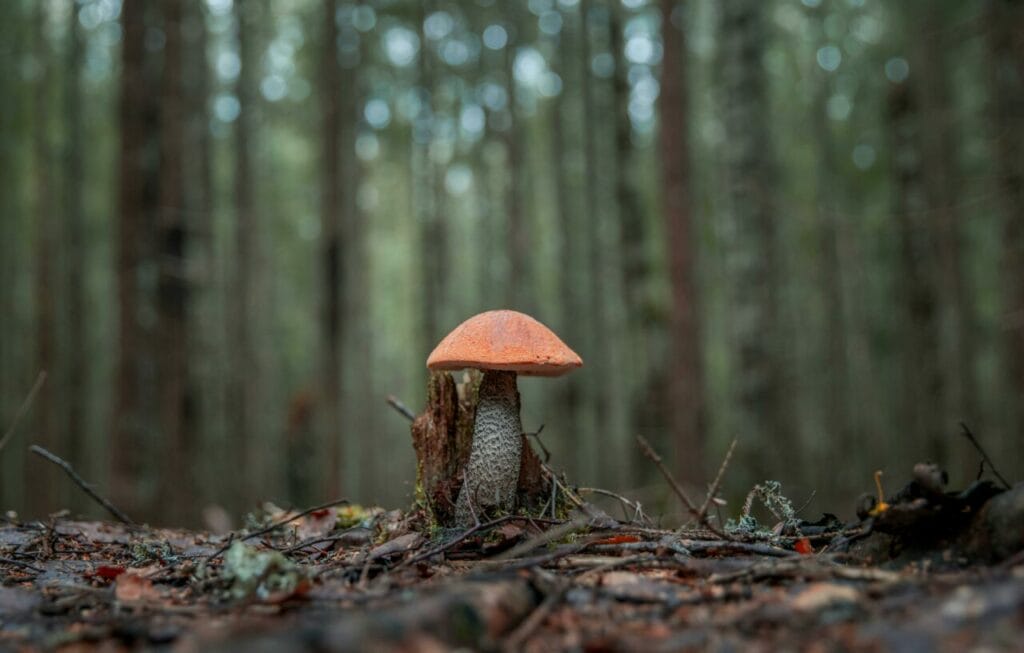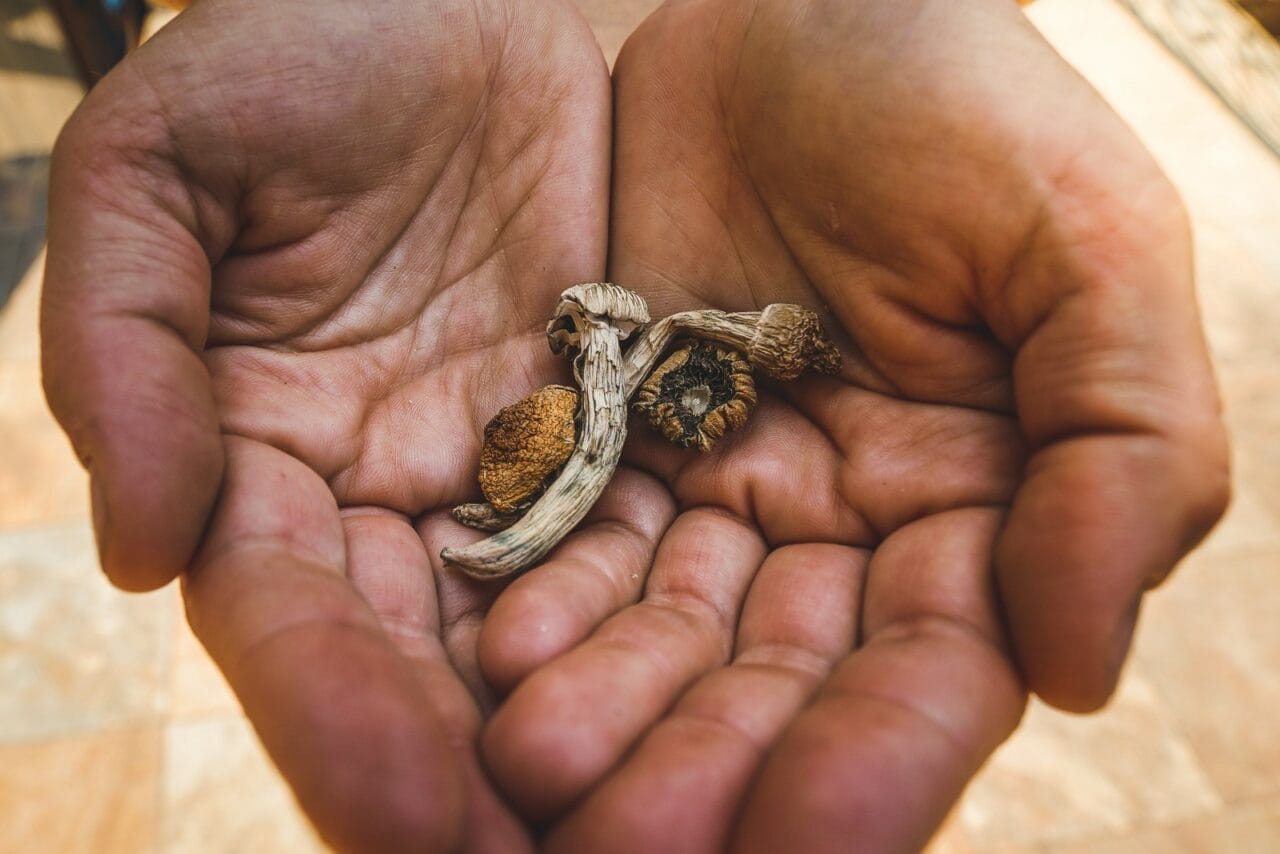Take a look at dried shrooms, one of the leading psychedelics available today. If you’ve heard of them and are considering trying them out, yet unsure if they are the perfect fit for you, keep reading.
Feeling uncertain about which psychedelic to start with is normal, especially for beginners. This guide aims to clarify how dried mushrooms compare to other substances and why they could be an excellent choice for your initial psychedelic experience.
[toc]Main Points:
- The main component in Psilocybe is the most researched psychedelic for mental health due to its safety, low potential for abuse, and brief duration of effects.
- The most commonly used form is dehydrated Psilocybe, which retains its potency and extends its shelf life.
- Psilocybin activates the serotonin 5-HT2A receptor, leading to heightened perception, vivid imagery, complex hallucinations, and time distortions.

A Deeper Look at Psilocybin Mushrooms: Journeying into the Psychedelic Fungi World
Psilocybin mushrooms contain the mind-altering compounds, psilocybin and psilocin, responsible for the hallucinogenic effects experienced by users. The best-known species, Psilocybe cubensis, features a light brown cap with dark spots, and a distinctive shape. Several other species within the Psilocybe genus also produce these compounds.
It’s worth noting that some harmful mushrooms with dangerous toxins resemble Psilocybe, which is why we recommend against picking your own shrooms.
Historically, many mushrooms played a crucial role in Central American spiritual rituals. Nowadays, they are under scientific exploration for their potential to treat mental health disorders, including substance abuse.
Preparation and Preservation: The Dehydrated Method
The most accessible form of Psilocybe is the dried version. Dehydration plays a key role in preserving the potency and extending the shelf life. Fresh mushrooms are typically dehydrated using a food dehydrator or left on a wire rack in a cool, dry area.
This process is essential for removing excess
Magic mushrooms can retain their active compounds and be safeguarded from mould growth through proper drying and storage. This is crucial for preserving the mushrooms for future use.
Follow this step-by-step guide to efficiently dry and store magic mushrooms:
- Use a suitable food dehydrator or a wire rack to thoroughly dry the mushrooms.
- Preserve them in airtight containers to ensure potency and guard against excessive moisture.
- Store them in a dry, cool place to maintain their psychoactive attributes.
- Prevent exposure to direct sunlight to avert degradation.
- Regularly inspect for signs of spoilage such as mould or dark spots.
Comparing Psilocybe Cubensis with Other Psychedelics
Besides dried mushroom products, there is a range of psychedelic products available online. These products vary in their effects on the body and methods of consumption. Many of these substances are categorized as classic hallucinogens, akin to psilocybin.
| Substance | Origin | Physical Effects | Research Indications | Duration | ||||||||||||||||||||
| Psilocybin | Exists naturally in over 200 mushroom species | Enhanced perception, hallucinations, altered sense of time | Depression, Anxiety, PTSD, OCD, Cluster headaches, Alzheimer’s disease | 4-6 hours | ||||||||||||||||||||
| DMT | Occurs naturally in plants like Psychotria viridis | Deep spiritual experiences, visions, auditory hallucinations | Depression, Addiction | 15-30 minutes | ||||||||||||||||||||
| LSD | Man-made, initially produced by Albert Hofmann in 1938 | Intensified emotions, altered perception, auditory and visual hallucinations | Depression, Anxiety, Addiction, Cluster headaches, Alzheimer’s disease, Tourette’s syndrome, ADHD | 8-12 hours | ||||||||||||||||||||
| MDMA | Man-made, first synthesized by Anton Köllisch in 1912 | Increased release of serotonin, dopamine, norepinephrine, and potentially oxytocin | PTSD, Autism spectrum disorder, Obesity, Narcolepsy, ADHD | 3-6 hours | ||||||||||||||||||||
| Ketamine | Man-made, first synthesized by Calvin L. Stevens in 1962 | Anesthetic, generates psychedelic effects at high subanesthetic doses | Depression, Bipolar disorder, Anxiety, Suicidal ideation, Addiction, Autism spectrum disorder, Chronic pain, Arthritis, Fibromyalgia | 1-3 Effects: These can include changes in heart rate, blood pressure, and pupils’ size. How Does Your Body Respond?The theories regarding the functionality of each substance are based on observed effects. While they offer insights into how these substances may be producing their effects, they don’t provide a definitive explanation of the involved underlying processes.
What Are the Impacts of Psychedelic Mushrooms?The mental and physical reactions can vary significantly based on the dosage, environment, and the user’s mental condition. Common experiences associated with the consumption of psychedelic mushrooms include:
When used responsibly, this substance is considered safe. However, unprepared users may have unpleasant experiences. While more seasoned users might find higher doses effective, beginners consuming large amounts could have a “bad trip.” Managing your experience with this substance is straightforward. Choose a calm, quiet environment and have a sober “trip guide” on hand for support. A Preferred Alternative to Other SubstancesMedical professionals often prefer dried shrooms for their long shelf life and easy dosing. Their shorter duration and more manageable intensity make them an ideal choice for those unaccustomed to psychedelic therapy. They are also more natural compared to other synthetic hallucinogens, excluding DMT. Establishing the benefits of different compounds can be challenging as many clinical trials produce similar outcomes, particularly between LSD and psilocybin. The latter is the most extensively researched psychedelic for mental health conditions, mainly due to its excellent safety profile, low abuse potential, and short perceptual trips. Health Benefits
Choose Your Favourite Dried Mushrooms and Start Your ExplorationThe rise of easy-to-use online services makes the exploration of these products a breeze. Simply place an order and have it conveniently delivered to your front door.
Choose Properly Dried Magic Mushrooms for Their Proven Effects and BenefitsDried mushroom products offer a unique and powerful psychedelic experience, comparable to LSD, MDMA, DMT, and Mescaline. They’re renowned for their introspective effects and potential therapeutic value. As the most studied compound, it’s easier to understand its benefits and learn how to use it effectively. Mushroom Coffee Canada offers a variety of these fungi, from highly potent strains to ones ideal for beginners. Frequently Asked QuestionsWho should consider (or avoid) psychedelic therapy?If you’re struggling with depression, anorexia, alcohol addiction, looking to quit smoking, or coping with a terminal illness, this therapy may help. However, if you or your family have a history of schizophrenia, psychosis, bipolar disorder, or borderline personality disorder, it’s crucial to consult your physician before engaging in this therapy. What should you expect from psilocybin therapy?Despite its intensity, psilocybin therapy can deliver long-lasting benefits. The therapy unfolds in three primary stages: {“ordered”:true} –>
Is it more economical to buy shroom products as compared to other compounds?When compared to LSD products, dried mushrooms are considerably cheaper. For example, you can buy 3.5 grams for around $20. Conversely, the cost of LSD in gel tabs varies depending on the dosage. For instance, six tabs with a strength of 100 micrograms each could potentially cost up to $90. |





